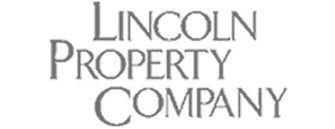Key takeaways
- Austin multifamily properties are rapidly adopting smart access, AI, and sustainability technologies to improve operations and resident experiences.
- Proptech enhances convenience, security, and engagement, helping you retain tenants and stay competitive in the Austin multifamily market.
- Unified data systems and AI-driven insights enable you to make smarter operational and investment decisions.
- Implementing property technology requires careful planning around costs, training, and cybersecurity to maximize benefits.
- Staying current with multifamily technology trends positions your properties for long-term growth and efficiency in Austin’s dynamic rental market.

Austin is one of the fastest-growing multifamily housing markets in the United States. With an influx of new residents, tech-forward businesses, and investor interest, the city has become a proving ground for innovation in the proptech landscape. For property managers, investors, and residents, this surge is reshaping how multifamily communities are built, managed, and experienced.
In this post, you’ll explore the most significant multifamily property technology trends in Austin 2025, from access control and AI to sustainability and leasing automation. By understanding these trends, you and other property stakeholders can position yourselves to thrive in Austin’s highly competitive real estate environment.
- What is multifamily property technology?
- Why Austin is a hotspot for multifamily technology adoption
- Key multifamily property technology trends in Austin in 2025
- Advantages of implementing property technology
- Challenges to implementing property technology
- How to choose the right proptech solutions for Austin properties
- Should you invest in multifamily property trends in Austin in 2025?
- Austin multifamily property technology trends FAQs
What is multifamily property technology?
Property technology, or proptech, refers to digital tools and platforms designed to improve real estate operations, enhance tenant experiences, and increase returns on investment. In the multifamily housing sector, proptech includes:
For residents, proptech makes daily living more convenient and secure. For investors and property managers, it reduces costs, streamlines operations, and improves long-term asset performance.
Austin, with its established reputation as a tech hub, is at the forefront of multifamily proptech adoption. The city’s vibrant startup ecosystem and large population of tech-savvy renters create fertile ground for new solutions.
Why Austin is a hotspot for multifamily technology adoption
Austin has become one of the most attractive markets for proptech innovation thanks to several driving forces. The city continues to experience rapid population growth, with thousands of new residents arriving each year. Many of these newcomers are young professionals seeking rental housing, which fuels demand for multifamily communities across the region.
Austin’s reputation as a tech hub also plays a significant role. As home to major technology companies and a thriving startup ecosystem, the city attracts innovative solutions in every sector, including real estate. For property managers, this means easy access to local partners and a strong talent pool that can help implement and support new technologies.
Another key factor is investor interest. Capital inflows into Austin’s multifamily sector have been robust, with institutional investors pursuing high returns in this growing market. This funding supports widespread adoption of proptech across luxury high-rises, most of Texas’s apartment supply, and student housing.
With these conditions in place, Austin is well-positioned to lead trends in multifamily housing throughout 2025.
Key multifamily property technology trends in Austin in 2025
Austin’s multifamily market is evolving quickly, and technology is at the center of that transformation. From smart access systems to AI-driven management tools, property technology is shaping how you operate communities and deliver value to residents.
The following trends highlight what you can expect to see across Austin in 2025:
- Smart access and security systems
- AI and predictive analytics in property management
- Sustainability and energy management tech
- Tenant experience platforms
- Self-guided tours and leasing automation
- Data integration and unified systems
1. Smart access and security systems
You are seeing more Austin properties adopt cloud-based video intercoms, mobile keyless entry, and integrated security platforms. These tools improve your residents’ convenience while helping you maintain secure environments.
You can streamline visitor management by using digital access codes and intercom apps, which reduce the need for front desk staff. With Austin’s high volume of e-commerce deliveries, secure package rooms and smart lockers integrated with access systems keep deliveries safe and efficient. Cloud-based systems also allow you to easily add or remove users, making them ideal for growing portfolios across Austin’s neighborhoods.
2. AI and predictive analytics in property management
Artificial intelligence is transforming the way you manage properties in Austin. AI-powered platforms help you predict maintenance needs, forecast leasing demand, and optimize rent pricing. By analyzing equipment usage data, AI alerts you before HVAC or plumbing issues arise, saving you from costly emergency repairs.
Predictive models also guide you in setting rental rates that maximize occupancy. Automation of repetitive tasks, such as screening applications or answering FAQs, reduces your team’s workload. In a competitive market like Austin, AI tools help you stay efficient while offering residents a higher level of service.
3. Sustainability and energy management tech
Austin’s commitment to green building practices makes sustainability-focused proptech a priority. Your residents expect eco-friendly features, and local regulations encourage you to adopt them. Smart thermostats let you and your residents automate climate control to save energy without compromising comfort.
Energy-efficient appliances reduce utility costs, while water tracking tools like leak detection sensors and usage dashboards help you conserve resources and prevent damage. Austin’s culture of sustainability, supported by financial incentives for energy efficiency, makes green technology a top trend in 2025.
4. Tenant experience platforms
To stay competitive in Austin’s multifamily market, you need to focus on digital tenant experience platforms. These apps consolidate multiple services, creating a seamless experience for your residents. Through all-in-one portals, they can pay rent, submit maintenance requests, and reserve amenities.
Engagement tools like announcements, event calendars, and community forums build stronger connections among residents. For you, automated reminders and digital communication tools save time and reduce the reliance on paper notices. By offering a polished digital experience, you improve retention and stand out from competing properties.
5. Self-guided tours and leasing automation
As more renters relocate to Austin from out of state, self-guided tours are becoming a necessity. You can provide prospective tenants with app-based entry credentials that allow them to view units at their own convenience. Automated leasing workflows streamline everything from checking unit availability to signing digital leases.
Because tours are available 24/7, prospects can visit properties outside of regular business hours, creating more opportunities for leasing. Out-of-state renters, in particular, benefit from this flexibility, which helps you fill vacancies more quickly and minimize downtime.
6. Data integration and unified systems
Austin properties are increasingly moving toward unified platforms that centralize data and operations. Instead of juggling multiple apps for access control, payments, and maintenance, you can manage everything from one dashboard. This approach streamlines your operations, saving you time while giving you a clear overview of property performance.
If you manage multiple properties across Austin, a unified system makes it easier to scale and track portfolios. Centralized data also enables you to make more informed decisions based on occupancy trends, cost management, and resident satisfaction. This move toward integration reflects both the maturity of the multifamily sector and the drive for long-term efficiency.
Discover five technology trends to follow:
Advantages of implementing property technology
When you adopt proptech trends in your Austin multifamily properties, you gain several advantages that improve both operations and resident experiences. These benefits make the investment worthwhile and position your community to stay competitive:
- Operational efficiency. With the right technology, you can automate repetitive tasks like rent collection, maintenance scheduling, and application processing. This saves your staff valuable time and reduces the risk of human error. By streamlining workflows, you free up resources to focus on higher-level management tasks that drive growth.
- Enhanced resident experience. Residents want convenience, security, and a sense of connection. By offering mobile apps for rent payments, smart access systems, and digital communication tools, you create a smoother living experience. When tenants find it easy to interact with your property, they are more likely to renew leases and recommend your community to others.
- Data-driven insights. Technology provides you with access to data that enables you to make informed decisions. You can track occupancy trends, monitor energy usage, and analyze resident feedback all from a single dashboard. These insights allow you to adjust strategies quickly and respond to changing market conditions with confidence.
- Stronger security. Modern access control and monitoring systems provide you with better tools to protect your property and residents. From cloud-based intercoms to integrated surveillance platforms, you can control who enters the building and monitor activity more effectively. This level of security builds trust and adds value for your tenants.
Challenges to implementing property technology
Despite the many advantages, you may face certain challenges when adopting proptech in Austin multifamily properties. Understanding these obstacles can help you prepare and make better decisions:
- Upfront costs. The initial investment for devices, software, and integrations is significant. Hardware, such as smart locks, security cameras, or sensors, requires capital, and subscription-based software platforms add recurring expenses. To justify the cost, you need to evaluate the long-term return on investment and weigh it against potential operational savings and increased resident satisfaction.
- Training requirements. Even the most advanced technology only works if people know how to use it. Your staff may need training to manage new platforms, while residents may require guidance to get comfortable with apps and smart features. If you skip this step, you risk poor adoption rates and frustration among both employees and tenants. Building a clear training plan ensures smoother transitions and stronger usage.
- Cybersecurity risks. When you introduce new technology, you also take on the responsibility of protecting sensitive resident data. Cybersecurity threats can undermine trust and cause costly disruptions. To minimize these risks, select vendors with robust security protocols and commit to ongoing monitoring and updates. Educating your staff on best practices also adds another layer of protection.
How to choose the right proptech solutions for Austin properties
Selecting the right technology for your Austin property depends on factors such as property type, portfolio size, and renter demographics. By focusing on these areas, you can make sure your investment delivers long-term value.
Property type alignment
You need to consider the type of property you manage when selecting proptech. A luxury high-rise may benefit from advanced tenant experience apps and premium automation, while student housing often requires affordable solutions that emphasize security and access control. Matching technology to your property’s unique needs ensures better adoption and satisfaction.
System integration
It is important to make sure that new tools can connect with your existing platforms. If your solutions cannot integrate, you risk creating data silos that slow down operations. By choosing technology that integrates smoothly, you create a unified system where information flows easily and staff can manage everything in one place.
Portfolio scalability
As your portfolio grows in Austin, you need proptech that can grow with you. Scalable solutions allow you to add new properties, users, or features without replacing entire systems. This flexibility makes it easier to expand while keeping operations consistent and efficient across multiple communities.
Should you invest in multifamily property trends in Austin in 2025?
The multifamily property technology trends in Austin 2025 demonstrate how innovation is transforming one of the fastest-growing rental markets in the country. You should pay attention to trends like smart access control, AI-driven property management, sustainability tools, and tenant experience platforms because these technologies directly impact how efficiently you operate your properties and how attractive they are to residents.
By adopting proptech, you can increase operational efficiency, reduce costs, and make data-driven decisions that improve your investment returns. Your residents benefit as well, enjoying more convenient services, enhanced security, and a smoother living experience. When you implement these solutions, you position your properties to remain competitive in Austin’s evolving market.
If you manage or invest in multifamily housing in Austin, it makes sense to explore modern proptech solutions now. Choosing the right technology for your properties can help you improve resident satisfaction, streamline operations, and maximize long-term value.
Austin multifamily property technology trends FAQs
- What is driving multifamily growth in Austin in 2025?
- How can sustainability and energy management technology improve my properties?
What is driving multifamily growth in Austin in 2025?
You are witnessing strong demand for rental housing in Austin, driven by a combination of population growth, job opportunities, and migration from other states. Thousands of new residents move to the city each year, many of them young professionals and families seeking rental options. This continued influx increases the need for multifamily communities and encourages property managers to adopt technologies that make their buildings more attractive and efficient.
How can sustainability and energy management technology improve my properties?
Energy-efficient appliances, smart thermostats, and water usage tracking help you reduce utility costs and environmental impact. These tools also appeal to environmentally conscious renters and align with Austin’s sustainability initiatives, making your property more attractive to residents.







